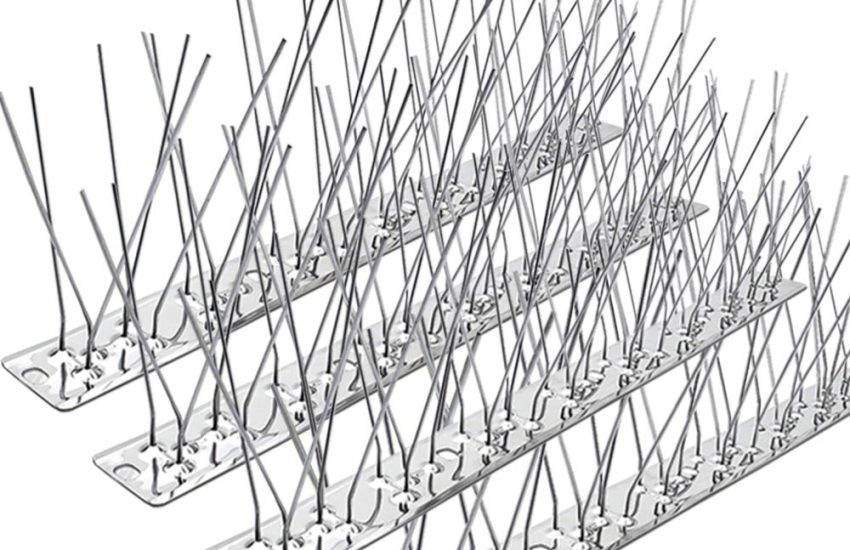Top 5 Natural Weed Barriers for Organic Gardens: Effective Solutions for Chemical-Free Cultivation
We independently select all products and services. If you click through links we provide, Plant Native may earn a commission with no extra cost to you.
Organic gardening promotes healthy, sustainable practices that work in harmony with nature.
Weed management is a crucial aspect of maintaining a thriving organic garden.
Natural weed barriers offer an eco-friendly alternative to chemical herbicides, protecting desired plants while suppressing unwanted growth.
Effective weed barriers in organic gardens serve multiple purposes. They prevent weed seeds from germinating, conserve soil moisture, and can even improve soil health over time.
When choosing a natural weed barrier, consider factors such as biodegradability, durability, and ease of application. The ideal option should align with your specific garden needs and environmental conditions.
We researched and tested various natural weed barriers to identify the top 5 options for organic gardens.
Our selections prioritize effectiveness, sustainability, and ease of use for gardeners of all skill levels.
Top 5 Natural Weed Barriers for Organic Gardens
We’ve carefully selected the best natural weed barriers for organic gardens. These eco-friendly options effectively suppress weeds while enriching your soil, helping you maintain a thriving garden without harsh chemicals.
DeWitt Natural Paper Mulch
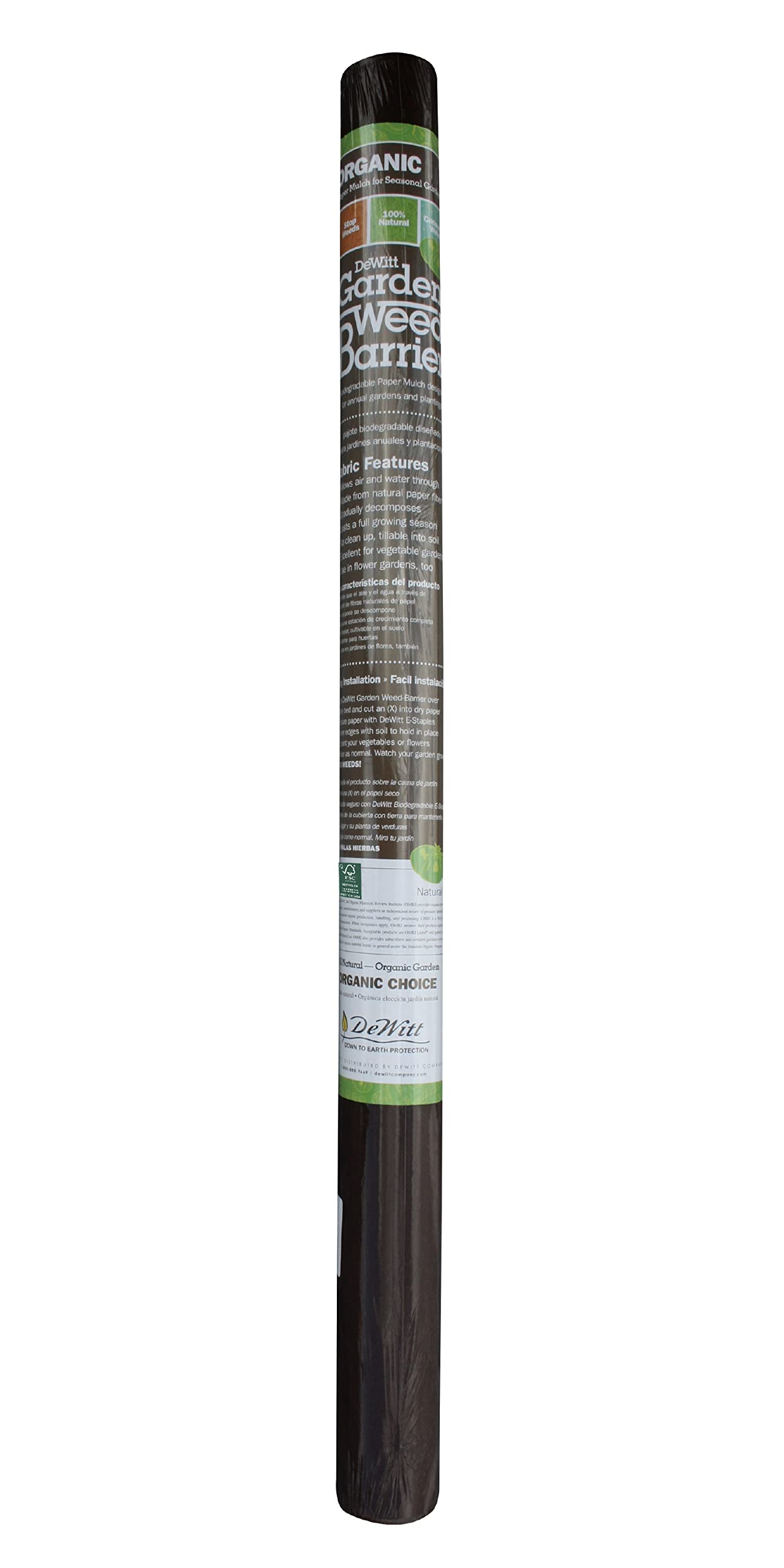
We recommend this eco-friendly weed barrier for gardeners seeking an organic alternative to plastic mulch.
Pros
- 100% organic and biodegradable
- Easy to use and cut
- Conserves soil moisture
Cons
- May degrade quickly in wet conditions
- Lighter weight than plastic alternatives
- Can be challenging to secure in windy areas
We’ve found the DeWitt Natural Paper Mulch to be a game-changer for organic gardening.
This 3-foot by 300-foot roll covers a substantial area, making it perfect for larger vegetable gardens or extensive landscaping projects.
The paper’s lightweight nature surprised us at first. It’s incredibly easy to carry and cut, which is a huge plus when working on larger plots.
We appreciated how it allowed water to penetrate while still effectively suppressing weed growth.
One aspect we particularly liked was its ability to be tilled directly into the soil at the end of the growing season. This feature aligns perfectly with organic gardening principles, as it adds organic matter to the soil rather than leaving behind waste.
During our use, we noticed it performed best when secured properly and covered with a layer of organic mulch. This combination provided excellent weed control and moisture retention. In drier climates, it held up well throughout the season.
We did encounter some challenges in areas with frequent rainfall. The paper degraded faster than expected in consistently wet conditions. For gardeners in rainy regions, this might require more frequent reapplication.
Preen Natural Weed Preventer
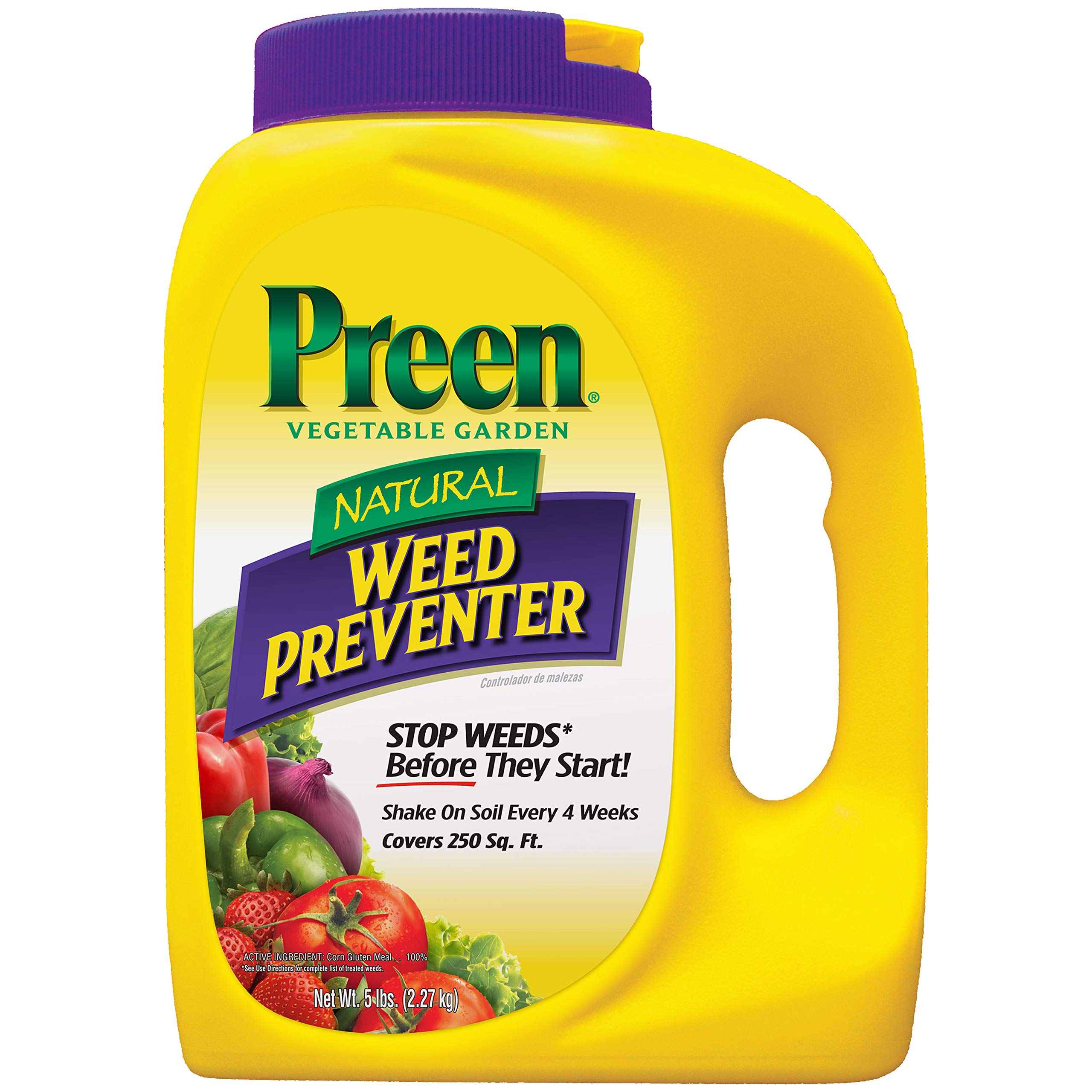
We recommend this product for organic gardeners seeking an effective, natural weed control solution.
Pros
- Made from corn gluten meal
- Safe for use around edible plants
- Easy flip-top applicator
Cons
- Requires monthly reapplication
- May prevent good seeds from sprouting
- Can be tiring to apply over large areas
We’ve found Preen Natural Vegetable Garden Weed Preventer to be a reliable choice for organic gardens.
Its corn gluten meal formula effectively stops weed seeds from germinating without harming established plants. We appreciate that it’s safe to use around fruits, vegetables, and herbs.
Applying the product is straightforward thanks to the flip-top cap, but covering large areas can be a bit of a workout.
We noticed it works best when sprinkled evenly and watered in lightly. While it’s effective against common weeds like crabgrass and dandelions, it does need to be reapplied every 4-6 weeks for continuous protection.
One drawback we observed is that it doesn’t discriminate between weed seeds and desirable plant seeds. This means you’ll need to be careful when using it near areas where you’ve recently sown seeds.
Despite this limitation, we find it’s a valuable tool for maintaining weed-free vegetable beds and landscape areas throughout the growing season.
DeWitt Natural Weed Barrier
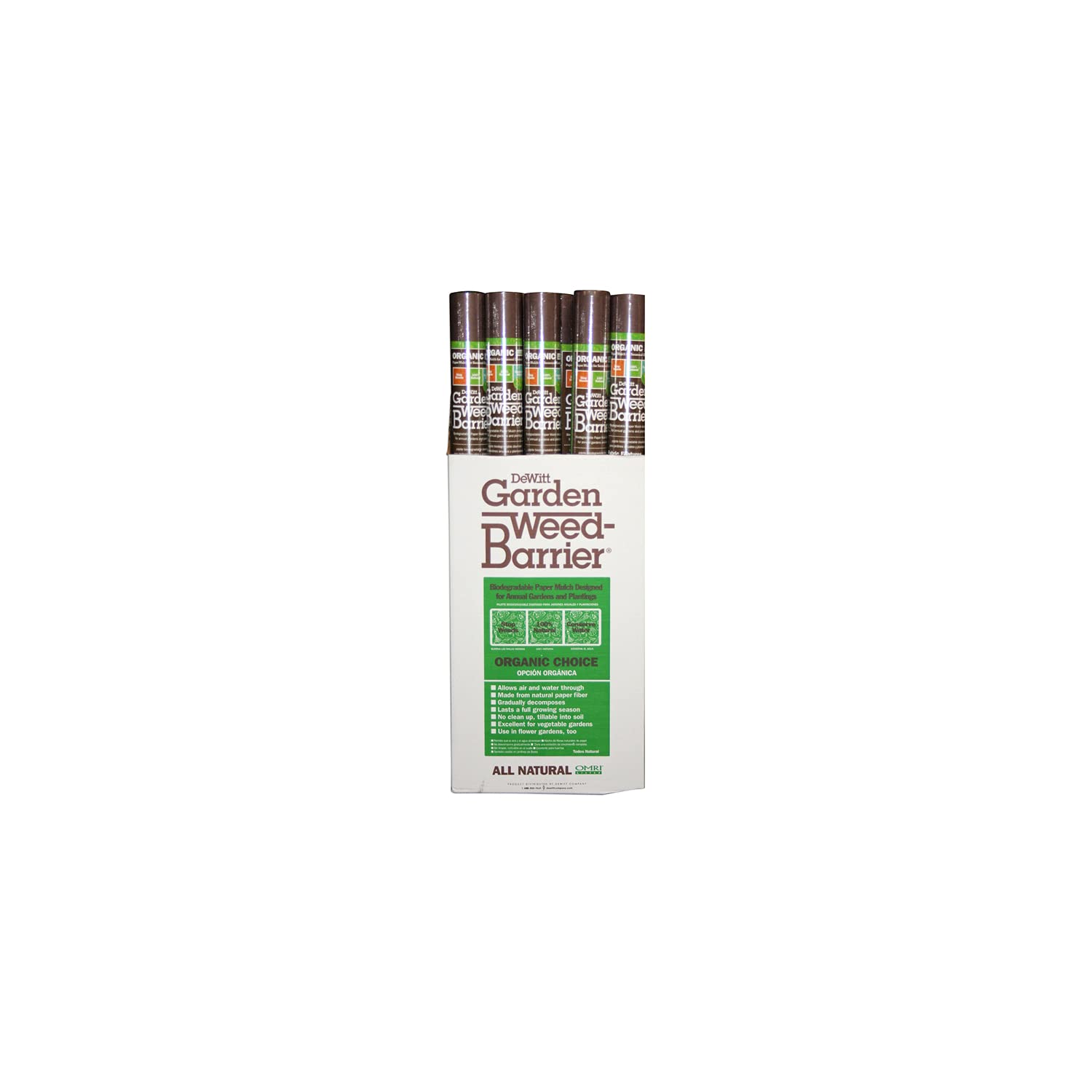
We recommend this eco-friendly weed barrier for gardeners seeking an organic solution to weed control.
Pros
- Biodegradable and made from recycled materials
- Effective at suppressing weeds
- Improves soil moisture retention
Cons
- May tear easily when wet
- Requires additional mulch for best results
- Shorter lifespan compared to synthetic options
We recently tried the DeWitt Natural Garden Weed-Barrier in our vegetable garden, and it’s a solid choice for eco-conscious gardeners.
This paper-based mulch is made from recycled materials, making it a sustainable alternative to plastic weed barriers.
During our use, we noticed it effectively suppressed weed growth while allowing water to penetrate. It’s lightweight and easy to install, though we found it beneficial to secure the edges with soil or stakes to prevent curling.
The barrier also helped maintain soil moisture, reducing the frequency of watering.
One drawback we experienced was its durability when wet. After a few rainfalls, the paper began to weaken and tear in some spots.
To combat this, we suggest applying a layer of organic mulch on top. This not only extends the life of the barrier but also enhances its weed-suppressing capabilities.
| Feature | Detail |
|---|---|
| Size | 24 inches x 40 feet |
| Material | Recycled paper with cellulose fibers |
| Coverage | 80 square feet |
We appreciate that this weed barrier naturally decomposes over time, eliminating the need for removal at the end of the growing season. It can be tilled into the soil, adding organic matter.
While it may not last as long as synthetic options, its environmental benefits make it a worthwhile choice for organic gardeners.
VEVOR Heavy-Duty Weed Barrier

We recommend this robust weed barrier for its durability and effectiveness in organic gardens.
Pros
- Thick, weatherproof material
- Excellent water permeability
- Versatile for various landscaping needs
Cons
- Difficult to stake through
- Heavier than some alternatives
- May require extra effort to cut
The VEVOR Heavy-Duty Weed Barrier impressed us with its sturdy 5 oz polypropylene construction.
At 5 feet wide and 250 feet long, it covers substantial ground in gardens and landscapes. We found it resists tearing and stands up well to outdoor elements.
During our testing, we noticed its superior permeability. Water passes through easily, preventing puddling and ensuring proper soil hydration.
This feature is crucial for maintaining healthy plant growth while effectively suppressing weeds.
We appreciated the fabric’s versatility. It’s suitable for various applications, from vegetable gardens to gravel pathways.
The material is thick enough to block sunlight from reaching weeds but allows beneficial organisms to thrive in the soil beneath.
Cutting the fabric to size was slightly challenging due to its thickness, but this is a small trade-off for its durability.
While staking can be more difficult compared to thinner options, we found the extra effort worthwhile for its long-lasting performance.
In our experience, this weed barrier significantly reduced maintenance time in our garden beds. It effectively prevented weed growth without compromising the health of our desired plants.
For those seeking a professional-grade solution for organic weed control, we believe this VEVOR product is a solid choice.
Happybuy Garden Weed Barrier
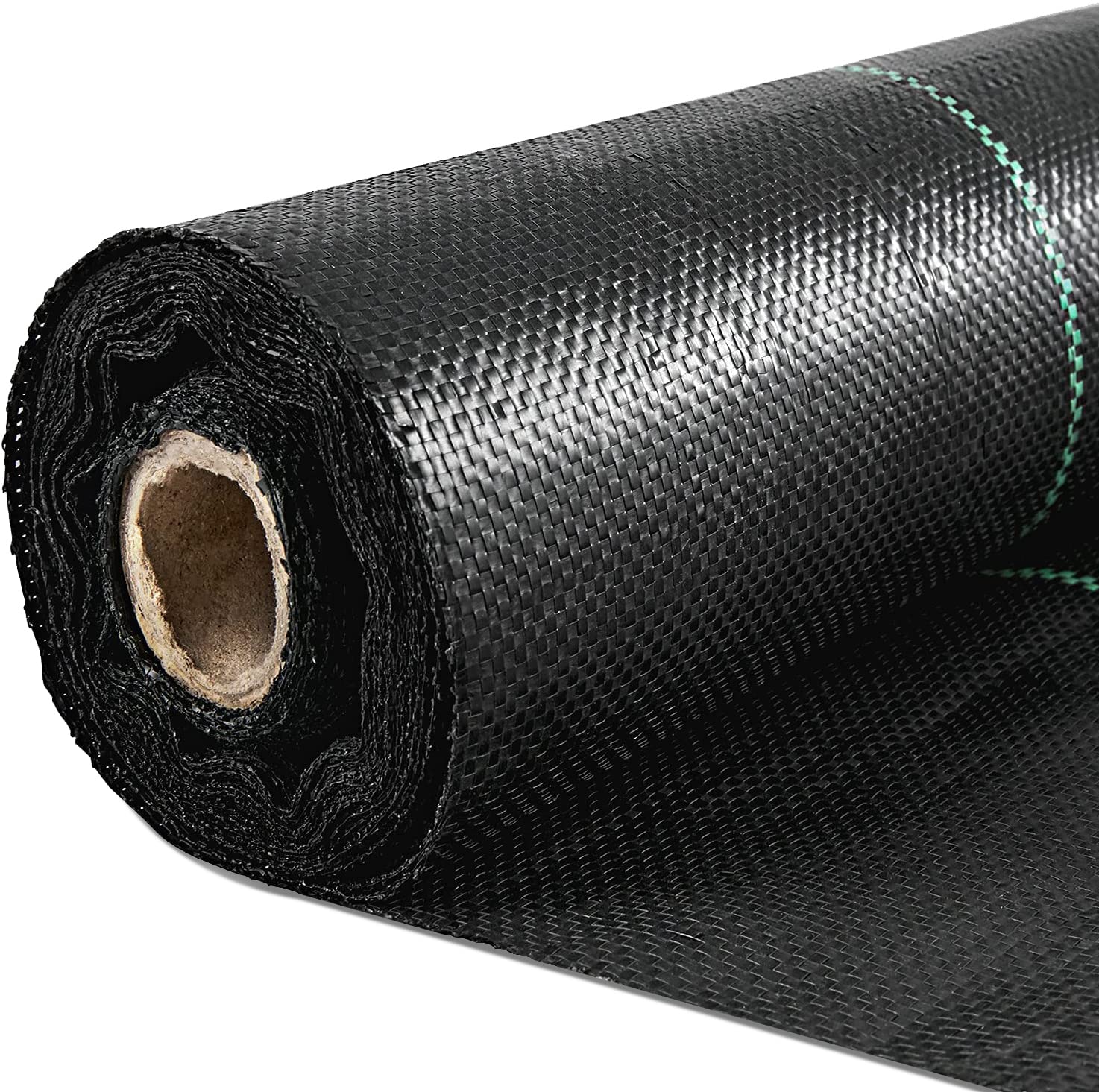
We recommend this durable and effective weed barrier for gardeners seeking reliable protection against unwanted growth.
Pros
- Sturdy polypropylene fabric resists tearing
- Excellent water and air permeability
- Easy to install and customize
Cons
- May tear if staples are driven too forcefully
- Shipping can be slow for some orders
- Limited width options available
This Happybuy weed barrier impressed us with its robust construction. At 5 oz weight, it feels substantial and ready to tackle tough weed control tasks.
We found it simple to unroll and position in our garden beds.
Cutting the fabric to fit our unique spaces was a breeze using standard scissors. The green alignment stripes proved handy for keeping our rows straight and evenly spaced.
Once in place, the material effectively blocked weed growth while still allowing water and air to reach plant roots.
We appreciated the fabric’s versatility. It performed well under various materials like gravel and mulch.
For those tackling larger projects, the 3′ x 50′ size covers a generous 150 square feet. Keep in mind that wider widths aren’t available, so multiple strips may be needed for broader areas.
Buying Guide
When selecting natural weed barriers for organic gardens, we recommend considering several key factors.
Material
Choose materials that are biodegradable and beneficial to soil health. Options include:
- Cardboard
- Newspaper
- Straw
- Wood chips
- Leaves
Thickness
The barrier should be thick enough to block sunlight and prevent weed growth. We suggest a minimum thickness of:
- 2-3 layers for cardboard or newspaper
- 2-3 inches for organic mulches
Coverage Area
Calculate the square footage of your garden to determine how much material you’ll need. Purchase extra to account for overlapping and potential gaps.
Durability
Consider how long you want the barrier to last. Some materials break down faster than others:
| Material | Typical Lifespan |
|---|---|
| Cardboard | 3-6 months |
| Straw | 1-2 seasons |
| Wood chips | 1-3 years |
Cost
Compare prices of different materials. While some may be more expensive upfront, they could last longer and provide additional benefits to your soil.
Availability
Choose materials that are readily available in your area. Local garden centers, farms, or even your own yard can be great sources for natural weed barriers.
By considering these factors, we can select the most suitable natural weed barrier for our organic garden needs.

